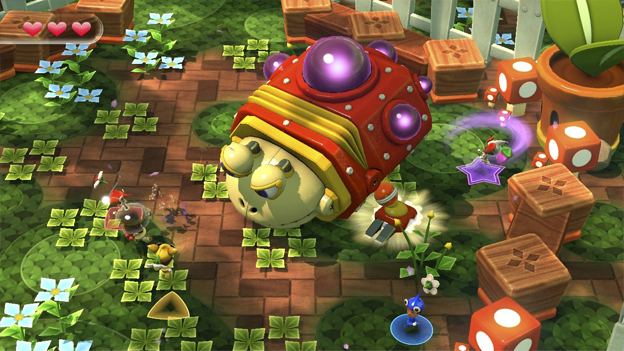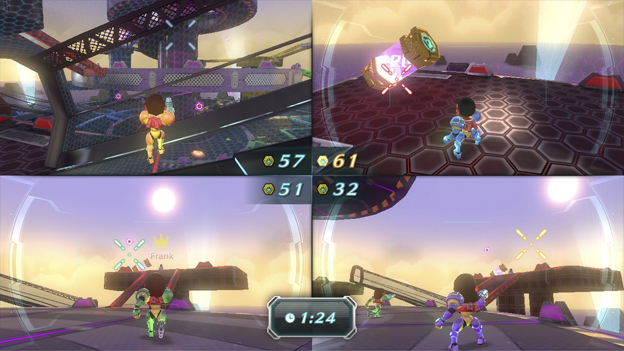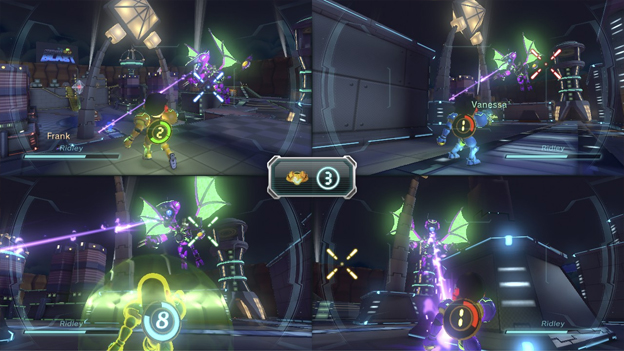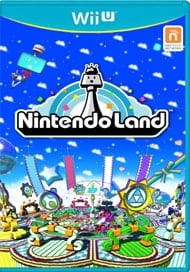The Nintendoest Place on Earth
Another Wii, another tech demo. While Wii Sports showed off the capabilities of the original Wii, NintendoLand is the new tech demo for the Wii U. Assumed—but not confirmed—to be included in box with every single Wii U sold, NintendoLand will give the player a choice of twelve different minigames, each one showing off a brand new bit of Wii U functionality. The game will also be totally compatible with Miiverse, the Wii U’s social network. NintendoLand was the big game that Nintendo ended their press conference on, and it had by far the largest section of the Nintendo booth, but is it all that Nintendo is hyping it up to be?
Five of the twelve games were available to play on the show floor. The first was Luigi’s Ghost Mansion, themed after Luigi’s Mansion, of course. The game actually plays something like Pac-Man Vs., just in reverse. Up to five players can play at once, one of which always has to use the Wii U GamePad. The GamePad player is the ghost, while the Wiimote players are all Luigi clones looking to destroy the ghost by shining their flashlights on it. The ghost can see the Luigis, but the Luigis can’t see the ghost. If the ghost sneaks up on a Luigi, the Luigi passes out and faints. Teamates can come to resurrect anyone who has fainted, but the ghost can then prey on them too. Every so often the ghost is revealed on the screen when thunder flashes, and Wiimotes vibrate any time the ghost is near. Communication is key here. The ghost wins if he manages to take out all the other players, and the other players win if they manage to take out the ghost.

Animal Crossing: Sweet Day actually plays quite similarly to Luigi’s Ghost Mansion—and even more like Pac-Man versus. In this game, four Wiimote players can only see a small portion of the screen and are tasked with collecting 50 pieces of candy. The GamePad player, on the other hand, can see the whole map and merely needs to catch the other players three times to win. The GamePad player controls two guards at once, one with each analog stick, and this is probably the most difficult part. Meanwhile, players’ heads swell as they pick up more and more candy, causing them to move more and more slowly.
The Legend of Zelda: Battle Quest is pretty straightforward. Instead of playing against each other, this game pits everyone against the A.I. The Wiimote-holding players will be using a sword and a shield to defeat enemies and clear obstacles, while GamePad players will be utilizing a bow and arrow. Archers use the touchscreen to aim and fire their bows, while swordsmen fight with the same waggle-fest sword controls we have come to know and love. This game is pretty much completely on rails, the characters moving through the dungeon automatically stopping only to fight. Still, it was a lot of fun and it shows how different control schemes can work in a cooperative context.

Takamura’s Ninja Castle is based off of what might have been the most well-received tech demo from E3 last year. The player has a bunch of ninja stars to throw at targets, and he does this by swiping them off the gamepad touch screen at the TV. The Wii U uses the GamePad’s gyro sensors to detect your aim, and it’s surprisingly accurate. Unfortunately, there’s not a whole lot of depth here. This is really just a shooting gallery with funky new controls.
The final game we got to play was Donkey Kong’s Crash Course. This game puts the player at the top of a 2D Donkey Kong-like stage, tasking them with piloting a kart down to the bottom of it. They can do this by tilting and turning the game pad as they tilt the world itself. This allows the kart to roll down slopes and eventually make it to the exit, but, once again, there isn’t a whole lot of depth to this game. It’s essentially just a digital version of those ball dropping puzzles we used to play as kids.

The final game we got to play was Donkey Kong’s Crash Course. This game puts the player at the top of a 2D Donkey Kong-like stage, tasking them with piloting a kart down to the bottom of it. They can do this by tilting and turning the game pad as they tilt the world itself. This allows the kart to roll down slopes and eventually make it to the exit, but, once again, there isn’t a whole lot of depth to this game. It’s essentially just a digital version of those ball dropping puzzles we used to play as kids.
The coolest game, however, was one that we didn’t get to try. At the Nintendo developers’ round table, a half-finished F-Zero minigame was shown off, and by “minigame” we mean “almost full experience.” The game puts the player in control of an F-Zero racer and catapults them down genuine F-Zero tracks at breakneck speeds. It’s great to see F-Zero coming back to Nintendo consoles, even if it’s just in minigame form. Hopefully this means that we will see a full release come out sometime soon.

That’s about it for NintendoLand. Final verdict? All the games are genuinely fun, but they aren’t deep enough to warrant a full purchase. In the end, we’re pretty sure NintendoLand can only ever exist as a tech demo.
Game Features:
